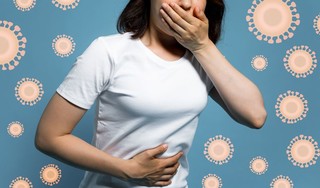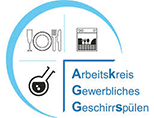Norovirus – Important to know
Published at 30.07.2021

Importance of noroviruses
Besides bacteria and parasites, viruses are often the trigger of infections, such as noroviruses. Without appropriate countermeasures, these infections spread epidemically within a very short period of time - therefore, measures in the scullery are also indicated.
Pathogen
Noroviruses belong to the calicivirus family. The first norovirus was discovered in 1972 in the city of Norwalk, Ohio, USA, which is why the viruses were formerly known as "Norwalk viruses".
Noroviruses are unenveloped RNA viruses of about 26 to 35 nm in size.
Clinical picture
Norovirus infection is an acute gastrointestinal disease with diarrhea, violent vomiting, cramping abdominal pain, severe nausea, headache and muscle aches. The incubation period (period from infection to the beginning of the disease) is 10 hours - 2 days. The clinical symptoms persist for about 1 - 2 days, maximum 4 days.
Duration of contagiousness
Infectivity is highest during the acute disease and until at least 2 days after the clinical symptoms have subsided. Virus excretion continues for about 10 days after the end of diarrhea and can last up to 4 weeks.
Pathogen-containing material
Noroviruses are extremely infectious: 10 to 100 virus particles are sufficient to trigger an infection. The pathogens can be detected in large numbers in the stool as well as in the vomit of the patient after the outbreak of the disease. One gram of stool can contain up to 1011 virus particles.
Transmission paths
Noroviruses are primarily transmitted from person to person through contact. The transmission occurs either through direct contact with infected persons or through indirect contact via contaminated objects and surfaces (dishes, door handles).
Infections can also be caused by contaminated food and beverages.
Obligation to register
According to the Infection Protection Act (IfSG "Prevention of Infectious Diseases in Humans") § 6 paragraph 1, there is an obligation to report infectious gastrointestinal diseases if a person working in the food sector is affected (§ 42 IfSG).
Consequences for dishwashing in case of a Norovirus outbreak
The most important measure to prevent infection is to stop the virus from being passed on through direct contact with infected persons or indirectly via surfaces and objects such as dishes. Careful hand hygiene, both of the sick person himself and of visitors and staff, is a basic requirement for this.
The used and possibly contaminated dishes must be treated in such a way that there is no risk of infection for persons who come into contact with them.
In this case, the dishes should generally be considered potentially infectious and the staff should only touch them with disposable gloves. A special marking of dirty dishes of these ill persons and/or the transport in closed containers or bags is recommended.
When cleaning in the dishwasher with other dishes, temperatures ≥ 60°C must be maintained in accordance with RKI ("Robert Koch Institut") recommendations.
The dishwasher should be operated in accordance with the DIN standard DIN SPEC 10534.
Viruses that are present on the surface of trays, plates or cutlery are inactivated by the machine dishwashing process in accordance with DIN and the corresponding high temperatures.
When switching between clean and unclean areas on the dishwasher, careful hand hygiene (cleaning and disinfection with a norovirus-effective product) must be carried out to prevent recontamination of the clean washed dishes. Therefore, hand washing areas with hand soap, disinfectants and disposable dry cloths must be provided in sufficient quantities.
The area around the dishwasher, in particular the area where dirty dishes are received, must be thoroughly cleaned after the dishwashing process and, if necessary, disinfected with a suitable surface disinfectant. In addition, the disinfection of surfaces in the kitchen that are frequently touched by hands, e.g. door handles, handles of transport trolleys or cooking appliances in the food production area, is recommended. As a preventive measure, this is also recommended permanently.
Sick personnel
Sick personnel must be released from work in the event of gastrointestinal complaints in accordance with the Infection Protection Act. Work can be resumed after the doctor's release under strict observation of hand hygiene. Since the virus excretion can continue for up to 14 days after the symptoms have subsided, hand and toilet hygiene must be particularly strictly observed during this time. This also applies to cleaning personnel, e.g. in the area of dishwashers.
General disclaimer of liability
In reproducing all the information contained in this article, the authors have taken great care to ensure that the information is reproduced in accordance with the state of knowledge at the time of completion of the work. Despite careful preparation and correction of the typesetting, errors cannot be completely excluded. Consequently, the authors and the publisher do not accept any responsibility or any subsequent or other liability arising in any way from the use of the instructions or parts thereof. Neither are they liable should an avoidable transmission of pathogens occur despite careful adherence to all recommendations given in this work.
Source citation:
Robert Koch-Institut (2003) Erkrankungen durch Norwalk-ähnliche Viren (Noroviren). Epidemiol Bull 6:39–41 Robert Koch-Institut (2007) Erkrankungen durch Norwalk-ähnliche Viren (Noroviren). Epidemiol Bull 5
